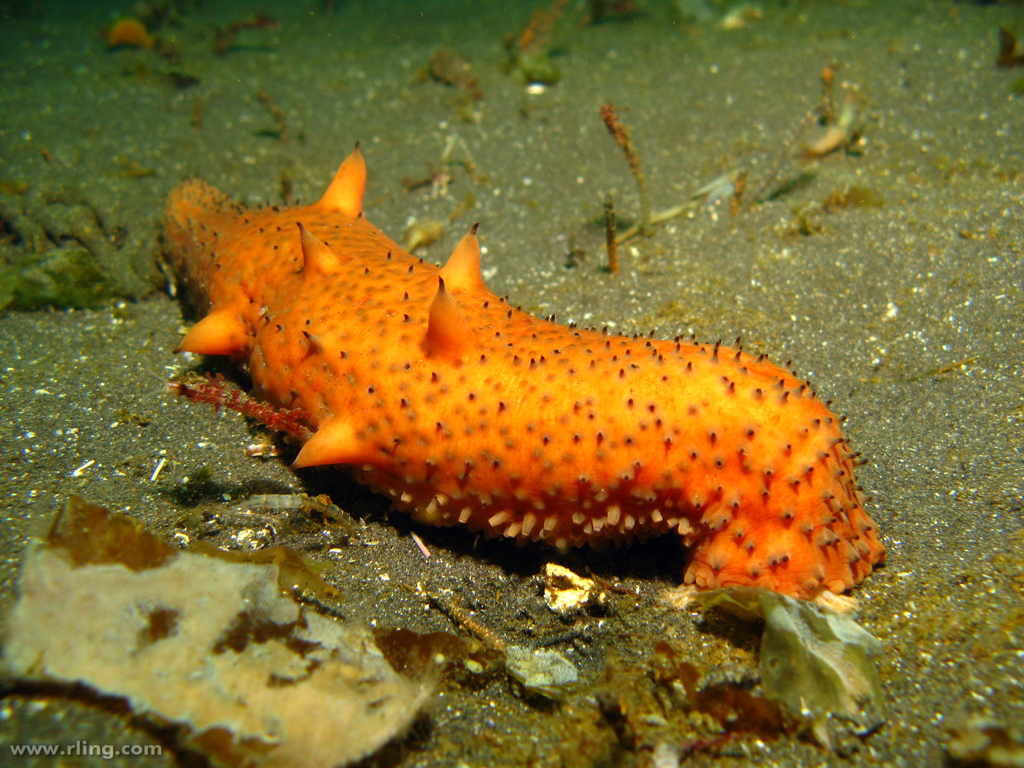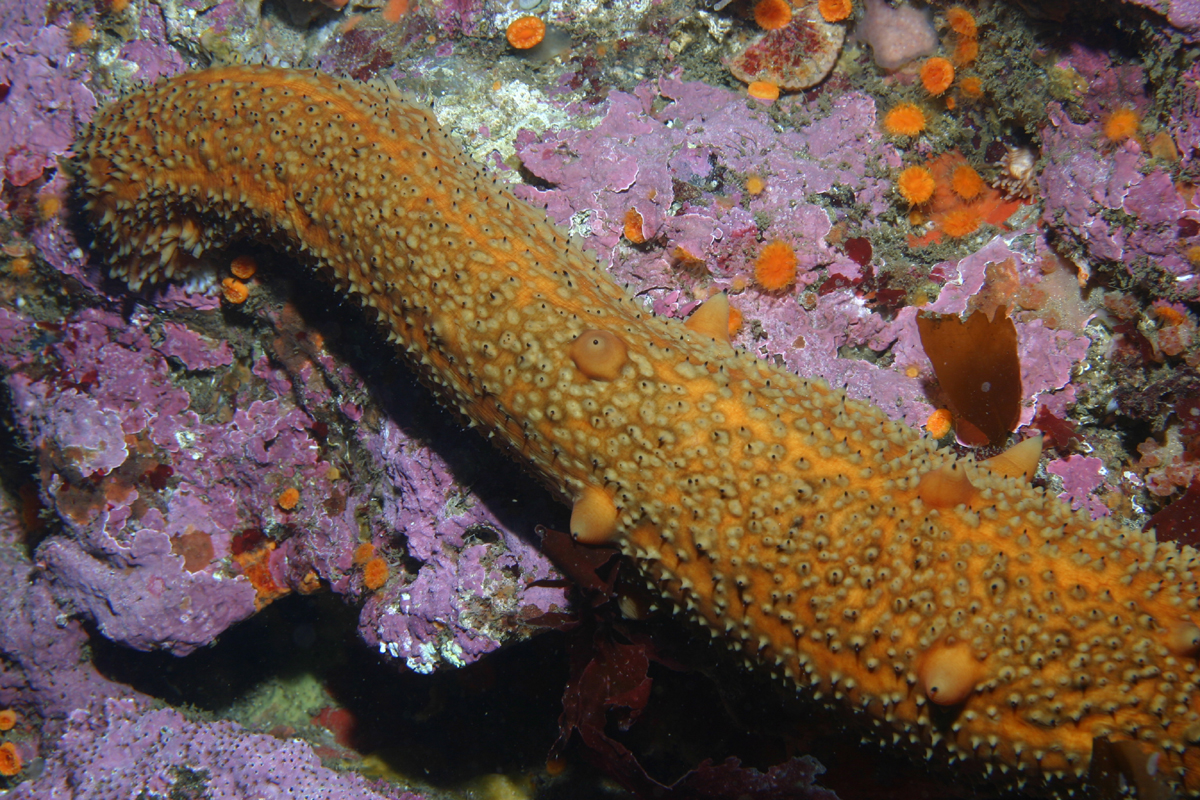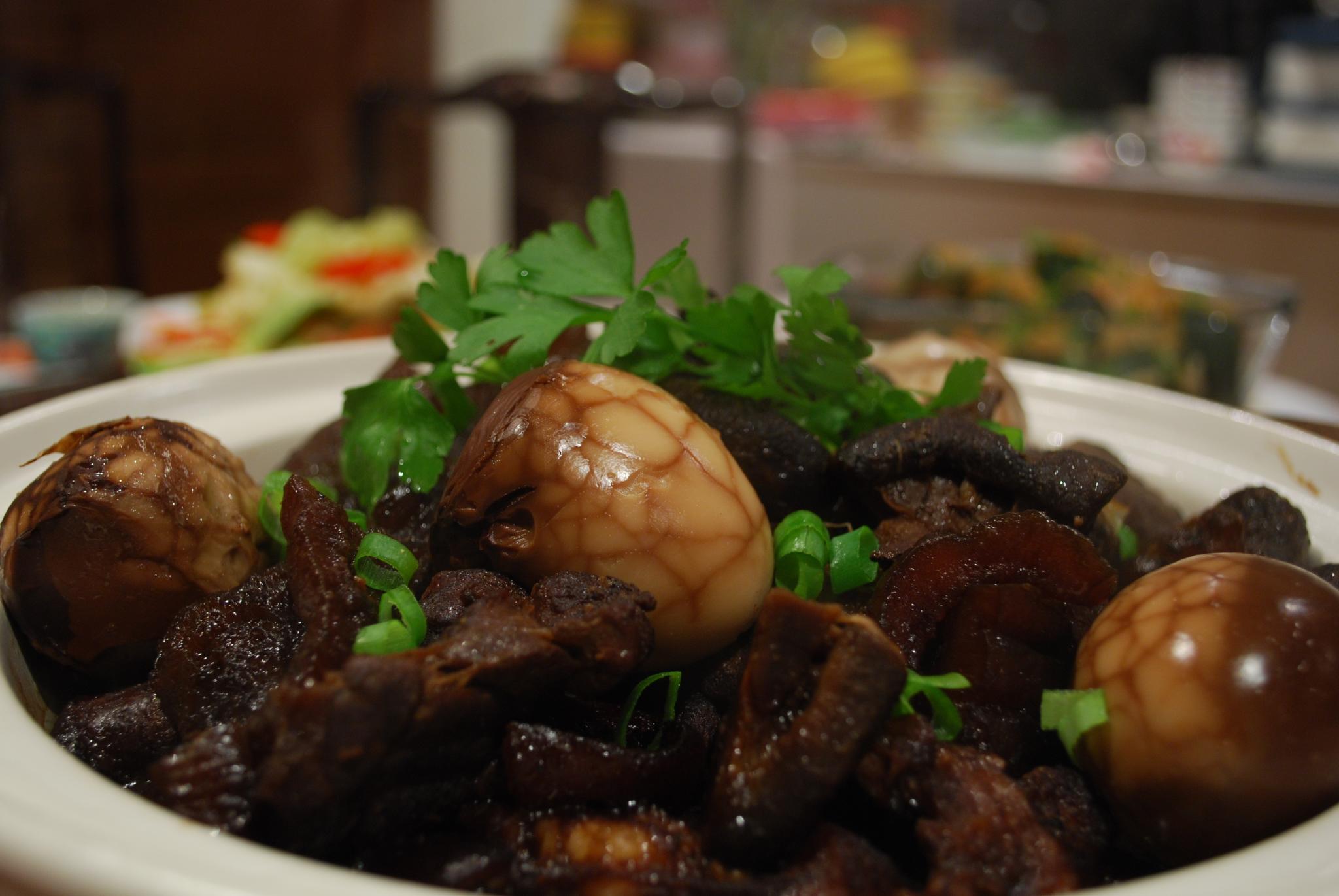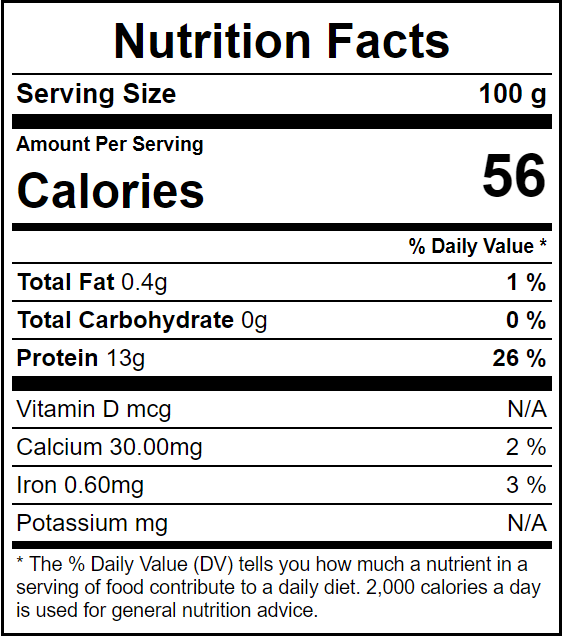Parastichopus parvimensis
Central Coast (South of Half Moon Bay to Point Conception)
Santa Barbara (Point Conception to Point Dume)
South Coast (Point Dume to Mexico border)
Firm fish
Shellfish
Wild caught

The Science

Taxonomic description
- As a marine invertebrate in class Holothuroidea, it is related to other echinoderms such as sea urchins and sea stars. [1]
- Skeleton is reduced to ossicles in body wall. [2]
- Reaches 30-40 cm in length. [2]
- Has yellow or brown skin with numerous black-tipped projections called papillae. [1]
Distribution
- Found from Baja California, Mexico to Monterey Bay, California between depths of 0-30 m. [1]
Life history
- Broadcast spawning is thought to coincide with phytoplankton blooms. [1]
- Becomes reproductively mature when its weight exceeds 40 g and begins reproducing at approximately 2 years old. [3]
- Spawning season lasts from spring to summer. [4]
- Undergoes annual evisceration during October and November, when it discharges the digestive and respiratory organs. After this, it stops feeding for four weeks until the organs regenerate. [1,4]
- Reproductive organs are reabsorbed in September - October and regenerate in January. [4]
- Larvae float as plankton for 28 days until settling underneath rocks or kelp holdfasts. [4]
Habitat
- Lives in benthic habitats ranging from rocky intertidal to soft-bottom. It typically avoids muddy bottoms and areas of high freshwater run-off. [1,4]
- Prefers to be on hard substrates and will actively move from soft sand or mud. [1,2,4]
- Feeds on detritus (small particles of organic matter) and small organisms living in sediments. [1,4]
- When feeding, it disrupts the bottom sediments to keep the upper seafloor soft and creates habitat for other animals. [1]
- Provides ecosystem services such as recycling organic matter and filtering or softening bottom sediment. [4,6]
The Fishery

Seasonal availability
- Fishing is available year-round. [5]
Regulatory and managing authority
- As established by the Marine Life Management Act, the California Fish and Game Commission regulates the fishery, and the California Department of Fish and Wildlife manages this fishery in state waters. [8]
Gear type
- Often caught by diving, usually alongside other dive fishers such as sea urchin. [2,3]
Status of the fishery
- Thought to be stable, despite little being known about it. [2]
- Could be susceptible to overfishing due to its high natural mortality and slow growth rate. [6]
- Unknown if the current rate of fishing is sustainable. [2]
- Fisheries are vulnerable to illegal, unreported, and unregulated fishing, especially poaching. [6]
Potential ecosystem impacts
- Almost exclusively fished by divers, thereby minimizing bycatch, unlike other species of sea cucumbers, which are fished by trawling and have higher rates of bycatch. [2,3]
- Populations have been decreasing at fishing sites around the Channel Islands. [2,4]
- There was substantial population decline from the 1980s through the 1990s due to lack of regulation but has since begun to recover. [5]
The Seafood

Edible portion
- Can be eaten whole. [2]
- Sometimes just the body wall or gonad is prepared. [2]
Description of meat
- Has little to no taste, but soaks up the flavors it is cooked in. [2]
- Has a gelatinous texture. [2]
Culinary uses
- Often boiled, dried, then salted. [2]
- Can also be frozen or pickled. [2]
- Usually, this species is sold fresh in California. [2]
- Used with flavorful broths or extracts. [2]
- Commonly found in Chinese soups or stews. [2]
- A braised sea cucumber recipe can be found on kuali. [9]
Nutritional information
- Has healthy levels of vitamin A, B1, B2, B3 as well as calcium, magnesium, iron, and zinc. [3]
- Has pharmaceutical uses as an anticoagulant, anti-inflammatory, antioxidant, and anti-hypertension. [7]
- High in healthy levels of protein and is a low-fat food. [3]
Toxicity report
- Non-toxic. [3]
Seasonal availability
- Year-round. [5]
References
[1] Mercier, A., J.-F., Hamel, J.J., Alvarado, E., Paola Ortiz, M., Benavides, and T.-G., Toral-Granda. 2013. Apostichopus parvimensis. The IUCN Red List of Threatened Species 2013. Web. https://www.iucnredlist.org/species/180368/1621102. Accessed 11 March 2019.
[2] Bruckner, A. W. 2005. The recent status of sea cucumber fisheries in the continental United States of America. SPC Beche-de-mer Information Bulletin, 22: 39 – 46. https://www.spc.int/DigitalLibrary/Doc/FAME/InfoBull/BDM/22/BDM22_39_Bruckner.html. Accessed 16 Sept 2020.
[3] Schroeter, S. C., D. C., Reed, D. J., Kushner, J. A., Estes, and D. S., Ono. 2001. The use of marine reserves in evaluating the dive fishery for the warty sea cucumber (Parastichopus parvimensis) in California, U.S.A. Canadian Journal of Fisheries and Aquatic Sciences. 58: 1773 – 1781. https://www.sciencebase.gov/catalog/item/50577c2be4b01ad7e027e411. Accessed 16 Sept 2020.
[4] Hamel, J.-F., and A., Mercier. 2008. Population status, fisheries and trade of sea cucumbers in temperate areas of the Northern Hemisphere. FAO Fisheries and Aquaculture Technical Paper. No. 516: 257 – 291. Web. http://www.fao.org/3/i0375e/i0375e09a.pdf. Accessed 16 Sept 2020.
[5] Rogers-Bennett, L., D. S., Ono. 2007. Sea Cucumbers. Status of the Fisheries Report. Web. https://nrm.dfg.ca.gov/FileHandler.ashx?DocumentID=34418. Accessed: 11 March 2019.
[6] Chávez, E. A., M., De Lourdes Salgado-Rogel, and J., Palleiro-Nayar. 2011. Stock Assessment of the Warty Sea Cucumber Fishery (Parastichopus parvimensis) of NW Baja California. CalCOFI Rep. 52: 136 – 147. http://calcofi.org/publications/calcofireports/v52/Vol_52_136-147.Chavez.pdf. Accessed 16 Sept 2020.
[7] Khotimechenko, Y. 2018. Pharmacological Potential of Sea Cucumbers. International Journal of Molecular Sciences. 19(5): 1342. https://dx.doi.org/10.3390%2Fijms19051342. Accessed 16 Sept 2020.
[8] Marine Life Management Act. n.d. California Department of Fish and Wildlife. Web. https://wildlife.ca.gov/Conservation/Marine/MLMA. Accessed 24 August 2020.
[9] Beh, A. kuali. n.d. Braised Mushrooms With Dried Oysters And Sea-Cucumber. Web. https://www.kuali.com/recipe/chinese-new-year/braised-mushrooms-with-dri.... Accessed 3 February 2021.
[10] Ling, R. flickr. 2010. Warty Sea Cucumber. Digital image. Web. https://flickr.com/photos/rling/4984823691. Accessed 25 February 2021.
[11] Lonhart, S. SIMoN. 2005. Digital image. Web. https://sanctuarysimon.org/dbtools/photo-library/id/2232. Accessed 25 February 2021.
[12] Kramer, R. flickr. 2014. Warty Sea Cucumber. Digital image. Web. https://flickr.com/photos/robanhk/14522691301. Accessed 25 February 2021.
[13] Alpha. flickr. 2009. Aunt Lay Leong's Braised Sea Cucumber, Mushrooms and Pork Leg with Aunt Susan's Tea Eggs. Digital image. Web. https://flickr.com/photos/avlxyz/3517133338. Accessed 25 February 2021.

